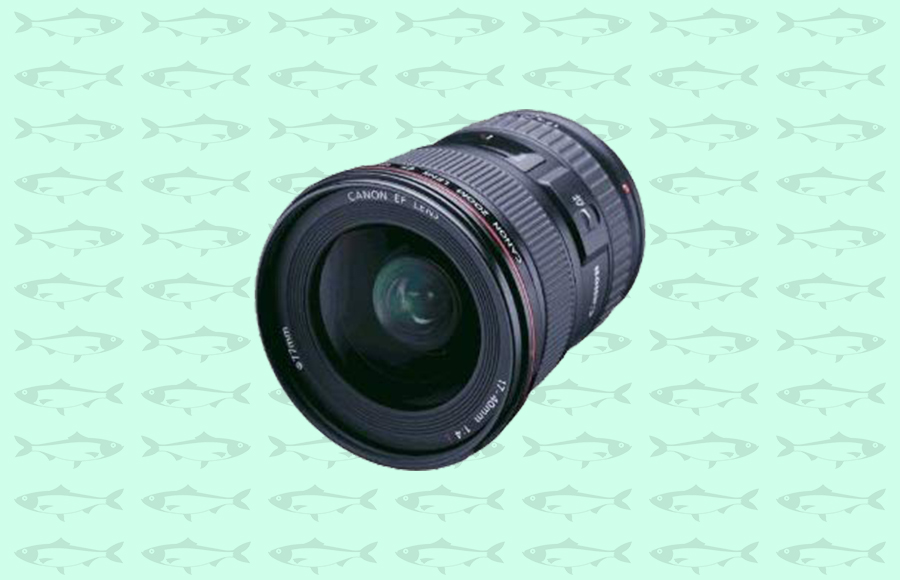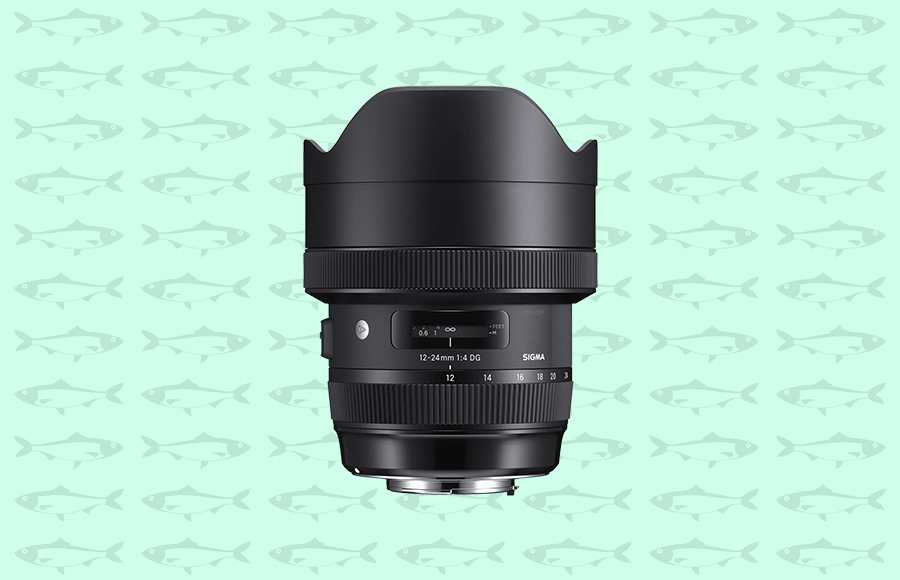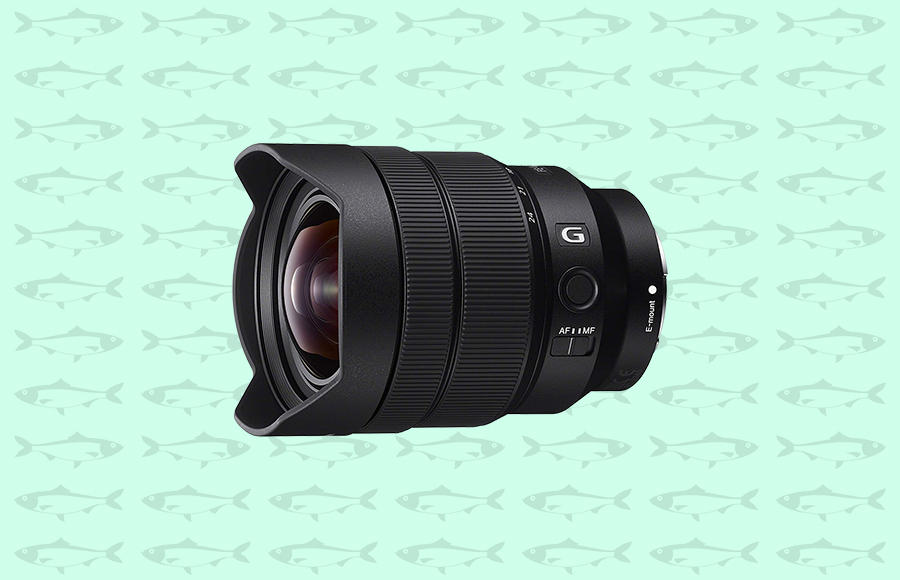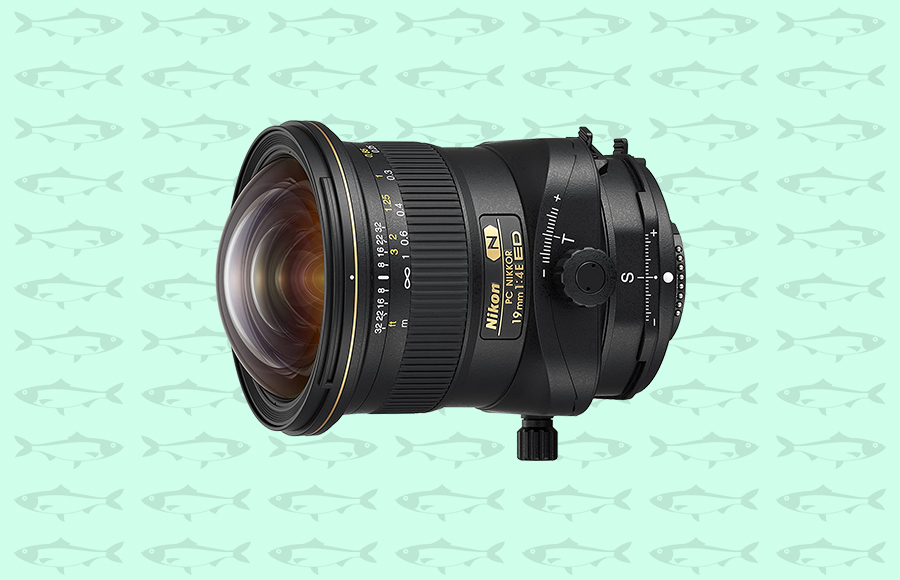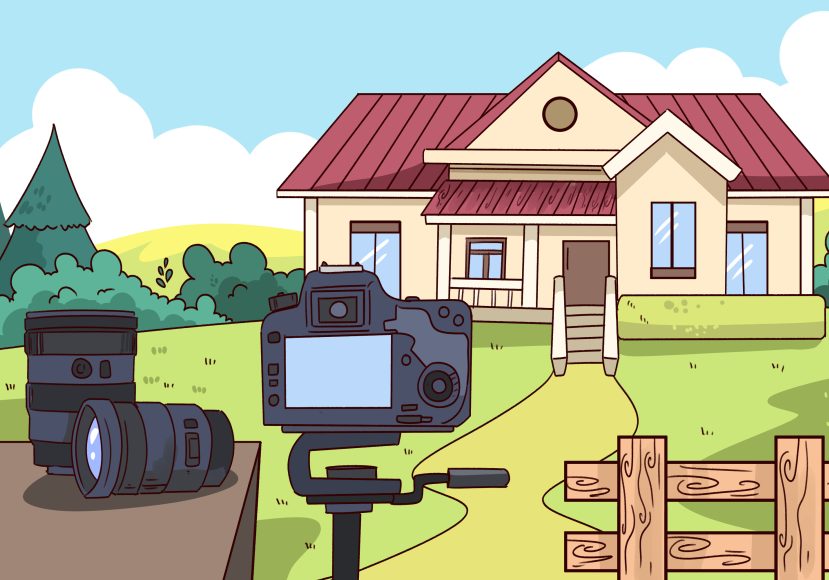
Best Lens For Real Estate Photography for professional results
Looking for the best lens for real estate photography? This guide has you covered! Find out the top 7 lenses to suit your camera.
Looking for the best lens for real estate photography in 2024? Look no further – we’ve got you covered!
Real estate photographers demand the highest image quality for their work. This is a guide that cuts straight to the chase with the best lenses available for each of the main camera brands.
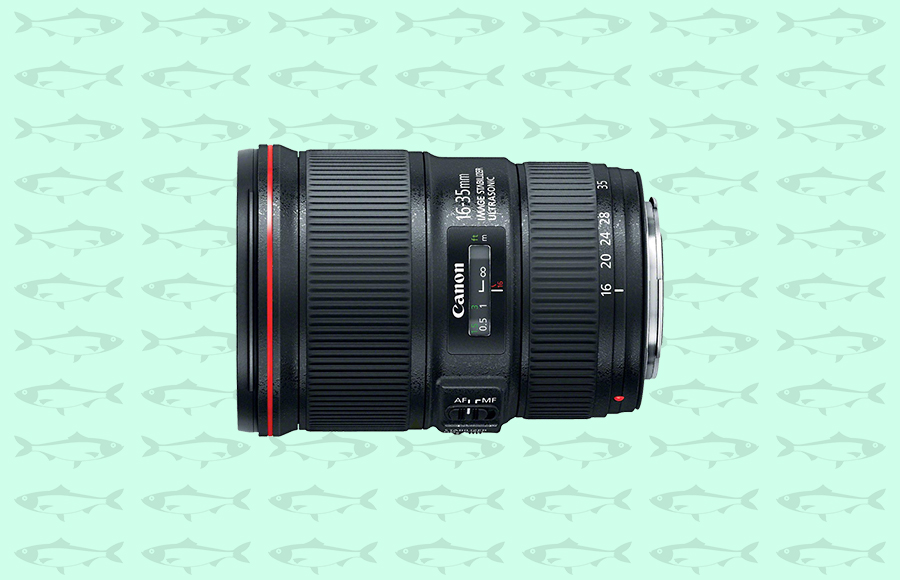
Impressive low-light performance and an ultra wide-angle zoom range make this lens capable even in dim or tight spaces.
Whether you’re after a zoom lens for multiple focal lengths, a tilt-shift lens to correct distortion, or simply the sharpest lens for your real estate camera, we’ll suggest the right lens for you.
There are several great lenses for real estate photography – in fact, almost any wide-angle lens can be used to photograph a building or an interior.
However, these are the best bang-for-your-buck lenses for the average real estate photographer who needs to provide the best image quality and variety of shots for their clients.
A lens with multiple focal lengths (i.e. a zoom lens) is usually the most versatile option for real estate photography, but we’ve also included two excellent tilt-shift lenses for professionals too.
Also, don’t forget about the growing popularity of using drones for real estate photography which can add more value to your services.
Let’s take a close look at the options.
Best Real Estate Photography Lens in 2024
| Image | Product | Features | |
|---|---|---|---|
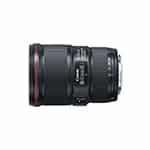 | Canon 16-35mm f/4OUR #1 CHOICE |
| View Price → |
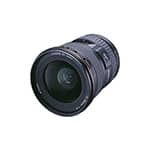 | Canon 17-40mm f/4TOP RATED |
| View Price → |
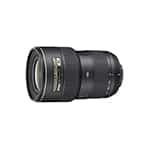 | Nikon 16-35mm f/4GREAT VALUE |
| View Price → |
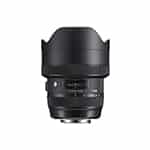 | Sigma 12-24mm f/4 |
| View Price → |
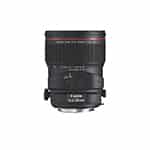 | Canon 24mm f/3.5 II |
| View Price → |
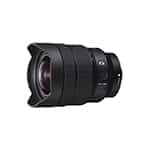 | Sony 12-24mm f/4 |
| View Price → |
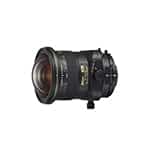 | Nikon 19mm f/4 |
| View Price → |
1. Canon EF 16-35mm f/4L IS USM
- Edge-to-edge sharpness
- Fast autofocus
- Solid and strong build
- Exceptional chromatic aberration performance
- A little pricey
There are very few Canon 35mm lenses that everyone loves, but this happens to be one of them. It’s beloved in a variety of wide-angle genres, but really shines in real estate photography.
The focal range is perfectly suited for both interior and exterior photography, whether you’re shooting in small, cramped spaces or large vistas.
The Canon EF 16-35mm f/4L also happens to be Canon’s sharpest wide-angle lens. Almost all wide-angle lenses have some softness in the corners, but this lens performs well – even wide open.
Stop down to f/8 (one of the more common apertures in real estate photography) and you’ll get some excellent razor-sharp images.
It’s one reason not to go for the more expensive Canon EF 16-35mm f/2.8L – if you’re only shooting real estate you won’t need the extra shallow depth of field. In addition, the f/4L is slightly sharper than the f/2.8.
The constant f/4 aperture will also help you nail those lower-light scenes while maintaining clarity, all with a minimum of barrel or pincushion distortion.
As one of Canon’s L-series lenses, the build quality of this lens is top of the line. It comes with weather sealing and a protective fluorine coating for challenging weather during exterior shots. The Ultrasonic Motor (USM) makes for a quick and accurate autofocus.
Unlike the Nikon, Canon’s EF 16-35mm f/4L IS is a relatively light lens (1.36 lbs compared to 1.5 lbs).
It does have image stabilization, though you probably won’t need it when shooting real estate. If, however, you do want to use it handheld the IS will give you 4 added stops.
But the main reasons to get this lens are its extraordinary sharpness and its exceptional chromatic aberration performance in the corners.
If you’re a Canon shooter, this lens is hands down one of the best lenses for real estate photography out there.
At just under US$1,000, it’s not cheap, but if you’re looking to do pro work, it’ll be worth every penny.
If you can get this Canon refurbished lens, all the better.
2. Canon EF 17-40mm f/4L
- Versatile focal range
- Excellent contrast
- Fast and silent autofocus
- Great value for money
- No Image Stabilization
If you’re looking for a lens that will be dedicated to real estate photography and the above Canon is a bit too expensive for you, take a look at the Canon EF 17-40mm f/4L.
It doesn’t have IS or weather sealing, but its focal range is more than enough for residential real estate and it performs almost as well as the Canon EF 16-35mm f/4 in terms of center sharpness.
Stop down to f/8 and you may not even notice any difference in corner sharpness either.
The Canon EF 17-40mm f/4L also has a slightly longer focal range. You lose 1mm on the wide end, but gain 5mm on the long end, something many photographers will find useful.
At 1.1 lbs (0.5 kg), the Canon EF 17-40mm f/4L is also a bit lighter than the 16- 35mm Canon lens.
Other aspects are the same as the other high-end L-type lenses: an ultra-sonic monitor (USM) for fast and silent autofocus, weather-resistant construction, and a protective fluorine coating.
Of course, there’s a bit more distortion and chromatic aberration in the Canon EF 17-40mm f/4L, but nothing that can’t be fixed in post.
The clincher? This lens currently sells for under US$650.
So while the 16-35mm f/4L is the superior lens, the Canon EF 17-40mm f/4L is a close second and more than $300 less. Well worth it if you’re a real estate photographer on a budget.
3. Nikon 16-35mm f/4 G ED VR
- Solid build
- Little distortion
- Ultra sharp
- Quick and accurate autofocusing
- Doesn’t come with Nikon’s Nano Crystal coating
- Relatively expensive
On Nikon mounts, the go-to lens for real estate photography is the Nikon 16-35mm f/4G ED VR.
It’s similar to the Canon EF 16-35mm f/4L in performance, price, focal length range, and constant f/4 aperture.
As an “ED” lens, the Nikon 16-35mm f/4G ED VR has extra-low dispersion glass to control chromatic aberrations. It also has a Silent Wave Motor (SWM) for quick and accurate autofocusing. The vibration reduction technology gives you up to 2.5 stops of image stabilization.
One thing the Canon EF 16-35mm f/4L doesn’t have, however, is Nikon’s Nano Crystal coating. This is especially handy when doing interior photography with mixed lighting.
As far as image quality is concerned, the Nikon 16-35mm f/4G ED VR has great center sharpness all the way through its focal range. Stop down to f/8 and the sharpness of the corners becomes solid as well.
There is a bit more distortion and chromatic aberration than its Canon counterpart, but it’s easily managed in post.
At just under US$1,000, it’s not a cheap lens. At the same time, it’s considerably better in both optics and performance than its predecessor – the 17-35mm f/2.8D.
So if you’re a Nikon real estate photographer in need of a solid, long-lasting 16-35mm lens, this is the one to get.
4. Sigma 12-24mm f/4 DG HSM Art
- Ultra-wide
- Works on Canon and Nikon
- Incredibly sharp
- Silent, fast autofocus
- Large size and weight
For those who like to give their clients a few different choices, having an ultra-wide alongside a standard wide angle can be particularly handy.
If this is you, then your best lens for real estate photography may well be the Sigma 12-24mm f/4 DG HSM Art. In fact, it’s quite possibly the best ultra-wide lens for Nikon FX shooters (though it also works on Canon full-frames).
You’ll be amazed at how sharp this lens is. Images come out crisp and clear, with exceptional edge-to-edge performance. Really, you’ll have to see it to believe it.
It’s a large lens, however, but that’s because it contains top-of-the-line components for controlling distortion, ghosting and flaring. While most ultra-wides are plagued by distortion, the Sigma 12-24mm f/4 DG HSM Art really keeps it in check, even at 12mm.
Sigma’s autofocusing technology works splendidly on this lens, and the hypersonic motor (HSM) is quiet, speedy, and accurate even in low light.
The constant f/4 aperture works well throughout the Sigma 12-24mm f/4’s focal range, though you’ll most likely be stopped up to f/8 or higher when doing real estate photography.
For cramped interior spaces or exteriors with limited room to set up out front, the Sigma 12-24mm f/4’s minimum focusing distance of 24 cm/9.45″ offers a lot of options you just can’t get otherwise.
As far as build quality is concerned, this lens is sturdy and strong. It’s also dustproof and splash-proof (though not fully weather-sealed). The front lens also has a coating that repels oil and water.
The only real con to this lens (other than price) is its size and weight. It’s part of the trade-off for such great distortion control.
At just under US$1,100, it’s not cheap. But if you’re looking for a quality ultra-wide for real estate photography, the Sigma 12-24mm f/4 DG HSM Art is one of the best lenses for real estate out there right now.
5. Canon 24mm f/3.5 II TS-E
- Amazing perspective control
- Solid build
- Edge-to-edge sharpness
- Unique image character
- No autofocus
- Expensive
Tilt-shift lenses have long been the gold standard for commercial interior photography. They give you a level of perspective control you just can’t get otherwise.
Sure, you could fix keystoning in post, but then you lose some of your field of view after the necessary cropping. You also won’t be able to match the overall image quality that optical lens corrections give you (as opposed to digital corrections).
On top of that, tilt-shift lenses give you a degree of creativity that no other lens can really match. The icing on the cake is that you can creatively shift them to avoid vents in a ceiling or some other distracting elements in a scene you want to avoid.
So which tilt-shift lens should you buy? Well, in the commercial photography world the Canon 24mm f/3.5L II TS-E is at the top of the list.
The edge-to-edge sharpness of the Canon 24mm f/3.5L II TS-E is simply fantastic. In addition, the 24mm focal length is the perfect compromise between being wide enough and not quite too wide. It lets you capture an interior space realistically.
In fact, many of the indoor architectural photos you see in magazines have been shot with this lens or something very similar to it.
The Canon 24mm f/3.5L II TS-E has a large image circle coverage, especially when compared to previous versions. Its degree of perspective control will amaze you (especially if you’re new to tilt-shift lenses). Beyond that, its edge-to-edge sharpness far supersedes anything you’ll see from zoom lenses.
There’s next to no distortion or spherical aberrations, and the Sub Wavelength Coating applied to the individual elements makes for some great contrast and color when shooting in strong lighting.
All-in-all, this is an absolutely excellent lens and a must-have for any serious pro who shoots real estate photography on a Canon.
If you’re new to tilt-shift lenses, however, be aware that there is a learning curve. It’s not a “run-and-gun” lens. You’ll need to take your time with it.
That being said, once you get the hang of this lens you’ll never want to go back to anything else. It’s just that good, and for professional interior photography, there’s really no comparison.
Also, this is a manual focus only lens. There’s no autofocus. But getting things into focus isn’t difficult with this lens, and you’ll need to take your time with the tilt and shift adjustments anyways.
Price-wise it runs what you’d expect for a professional-calibre lens – around US$1,800 – but you really get superior real estate photos in return.
If you want top-of-the-line images and are willing to invest, the Canon 24mm f/3.5L II TS-E is certainly one of the top candidates for the best lens for real estate photography award.
6. Sony FE 12-24mm f/4 G
- Ultra-wide
- Clean and crisp
- Lightweight
- Excellent AF speed
- Can’t be used with filters
- High price
For Sony users, the Sony FE 12-24mm f/4 G lens is the best ultra-wide zoom lens in its class.
You’ll be surprised how sharp this lens is. The details always come out clean and crisp with nice contrast, not only on the focus point but throughout the entire frame.
With any ultra-wide-angle lens, you have to pay special attention to the edges of the frame. The extremes of the focal range tend to be particularly dicey, but the Sony FE 12-24mm f/4 G performs admirably well throughout its entire zoom range.
There’s definitely a touch of stretching and edge distortion at 12mm, but the quality of detail along the edges is impressive. There’s no smearing or blurring, and the corner-to-corner sharpness of this lens is an absolute delight. Stop down to f/8 or f/11 and you really hit the sweet spot, no matter the focal length.
Another great benefit to this lens is its size and weight. It’s considerably smaller than the Sigma 12-24mm f/4 DG HSM Art lens (4.6 x 3.5 inches compared to 5.2 x 4.0 inches) and weighs more than a pound less. So if portability is an issue, the Sony FE 12-24mm f/4 G is definitely the better bet.
The only real downside to this lens is the fact that you can’t use filters with it. That won’t bother real estate photographers who only have a single use for this lens, but if you also want to do landscape photography you’re a bit out of luck.
You can’t add screw-on filters to this lens. The lens shade is fixed in place, and the front element bulges out. If you do want to add filters, you’ll need to go in the direction of a filter holder, and you can find some dedicated holders for this lens.
Cost-wise, the Sony FE 12-24mm f/4 G is up there, currently hovering around just under US$1,800. Still, when compared to its Canon counterpart, the Canon EF 11-24mm f/4L, it’s almost half the price.
The Sigma 12-24mm f/4 DG HSM Art lens is a little less expensive, but a lot bulkier. (Both can be used with the Sony FE mount via an adaptor.)
All in all, the Sony FE 12-24mm f/4 G is the best choice for Sony full frame camera users looking for a high-performing lens with an ultra-wide focal length.
7. Nikon PC 19mm f/4 ED Tilt Shift
- Excellent sharpness
- Durable build
- Nano Crystal lens coatings
- Nice and wide
- Manual-focus only
- Highest priced on the list
No “best lens for real estate photography” list would be complete without a Nikon tilt-shift lens. That’s where the Nikon PC Nikkor 19mm f/4E ED Tilt-Shift comes in.
The Nikkor 19mm f/4E ED is a specialized, top-of-the-line wide-angle lens designed for architectural and interior real estate photography. It’s the widest tilt-shift lens available for Nikon full-frame shooters.
As would be expected of a lens of this calibre, the edge-to-edge sharpness of the Nikkor 19mm f/4E ED is exceptional, especially between f/4 to f/16. (This lens goes up to f/32.)
Like the Canon 24mm f/3.5L II TS-E, the Nikkor 19mm f/4E ED has very little distortion and next to no chromatic aberration.
The nanocrystal lens coatings keep lens flare and ghosting at bay, while the fluorine coating protects the lens from collecting dust and fingerprints.
Note, it’s also a manual-focus only lens, though focusing with it is easy.
All tilt-shift lenses take a while to master, and the Nikkor 19mm f/4E ED is no exception. Once you learn to dial it in, though, you’ll never look back.
Still, with a price tag of just under US$3,400, you’ll probably only want to invest in this lens if your photography for real estate has a lot of demanding technical requirements and you need the wide focal length. If that’s the case, this lens will really shine.
If you can live with something a little less wide or your work is not so technically demanding, it might be worth looking into the less expensive Nikon PC 24mm f/3.5D ED PC-E (around US$2,200).
Either way, this is a premium quality lens and a strong performer all the way around. If you want to take your real estate photography to the next level, the Nikkor 19mm f/4E ED is a fantastic lens and a great focal length to work with.
FAQ’S
Which mm lens is best for real estate photography?
The ideal focal length for real estate photography is 12-24mm. However, you can also use other focal lengths, such as 10-18mm and 10-24mm.
What kind of lens is suitable for real estate photography?
Wide-angle lenses are the top choice among several real estate photographers. These lenses allow you to seamlessly capture indoor spaces.
Best Lens for Real Estate Photography | Final Words
Ultimately, the best lens for real estate photography is the one that suits your needs and budget.
Whether you go for an ultra-wide-angle focal length, a standard zoom or a tilt-shift, there’s bound to be something on the above list that can help you take your real estate photography to the next level.
Got any questions or tips of your own? Leave us a comment below.





